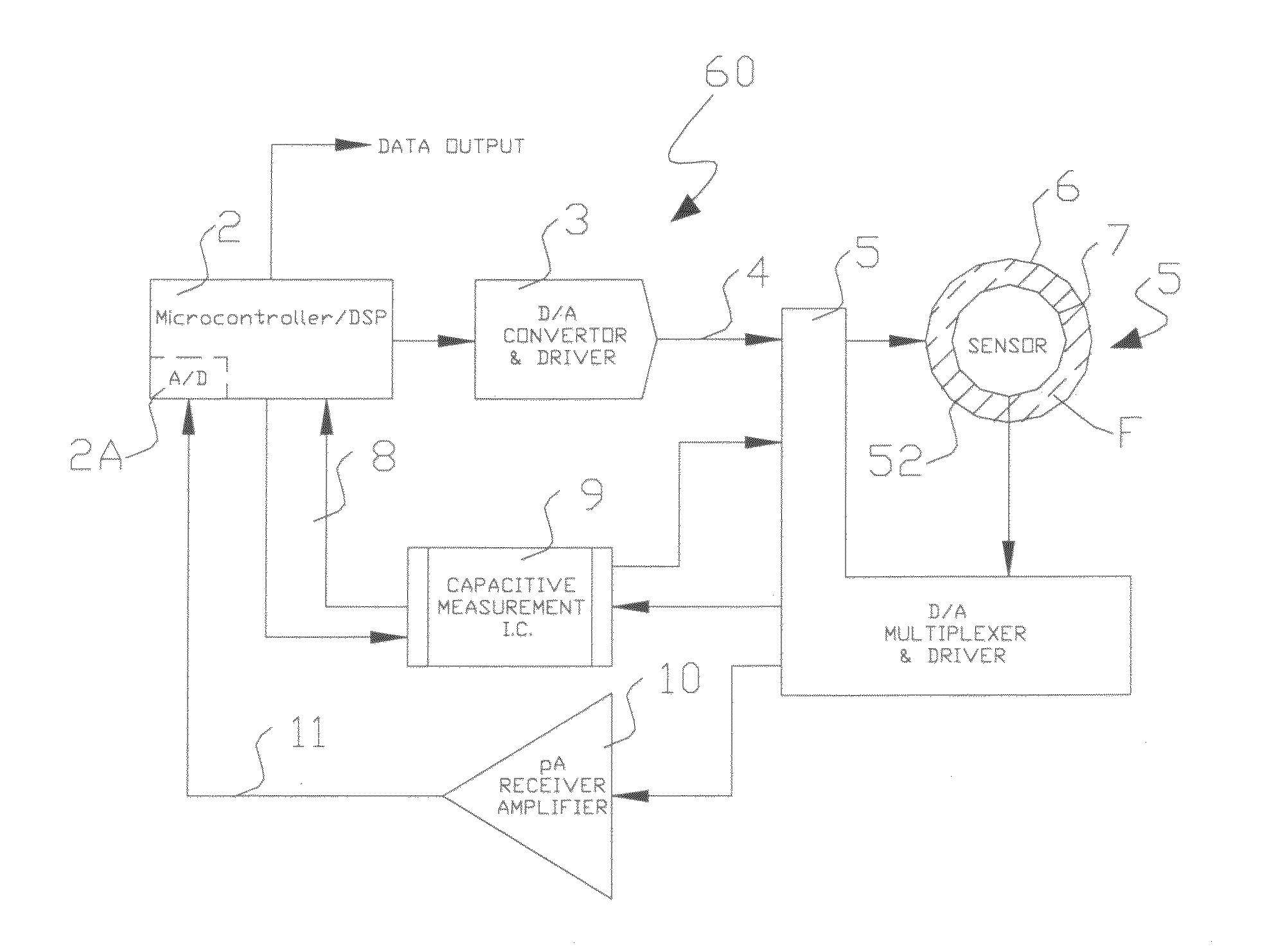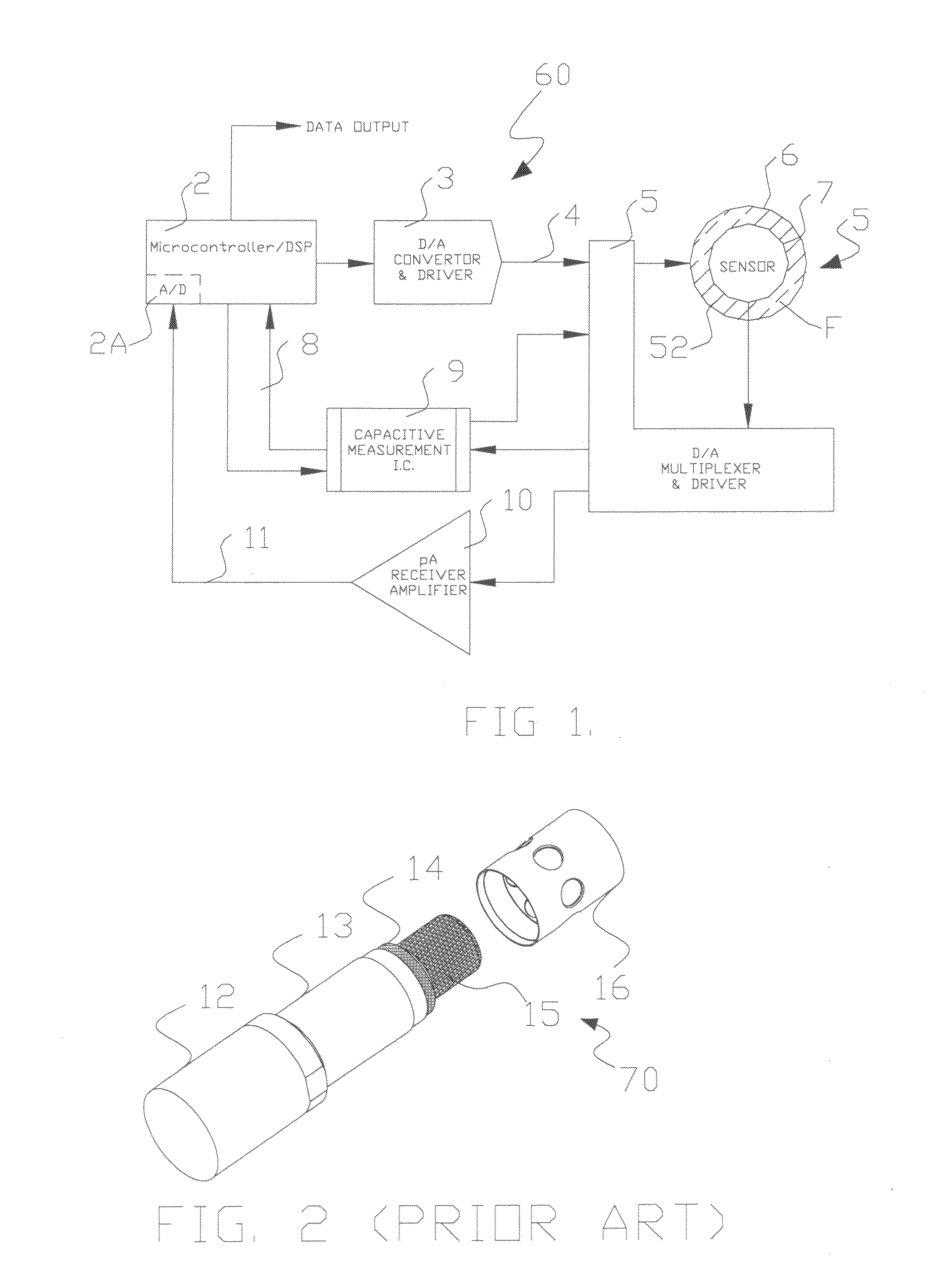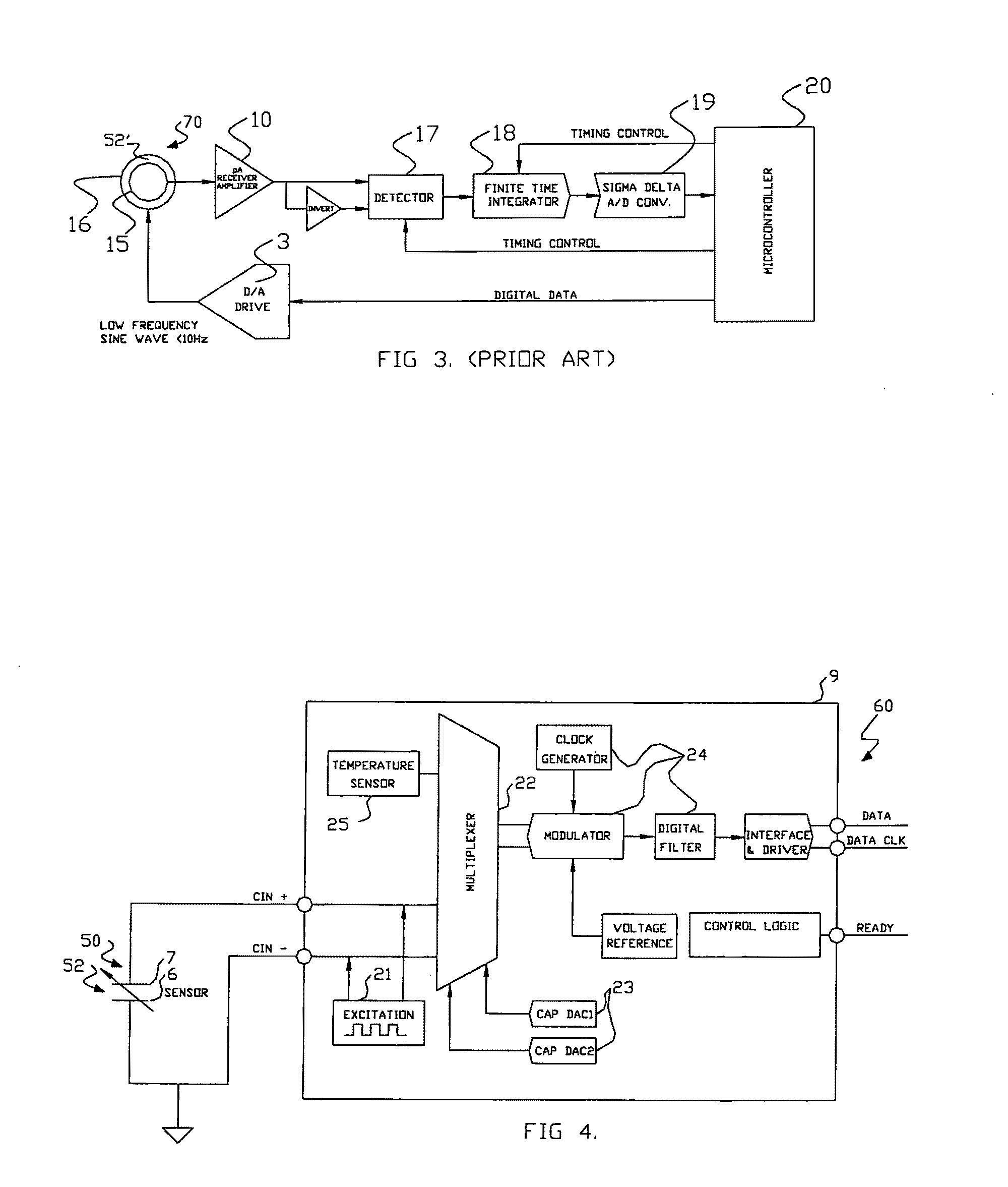Apparatus and method for the measurement of electrical conductivity and dielectric constant of high impedance fluids
a technology of electrical conductivity and dielectric constant, which is applied in the direction of fluid resistance measurement, resistance/reactance/impedence, instruments, etc., can solve the problems that the complexity of a multiple electrode system does not lend itself to low cost measurement of plural parameters of lubrication oil, and the operation characteristics such as capacitance off-setting capabilities are not suitable for use with this known hydrocarbon fuel sensor. , to achieve the effect of low component requirements and low cos
- Summary
- Abstract
- Description
- Claims
- Application Information
AI Technical Summary
Benefits of technology
Problems solved by technology
Method used
Image
Examples
Embodiment Construction
[0022]A sensor 50 according to this invention in the embodiment shown in FIG. 1 has a single pair of coaxial, bare metal electrodes 6, 7 that form a measurement cell 52 that holds a fluid F to be measured. In this exemplary embodiment, the sensor geometries and constants are adapted for a conductivity measurement system for jet fuel & lubricating oils with a range 0-2000 pS / cm (Pico-Siemens / centimeter) with a typical dielectric constant of 2 to 2.5. While the electrodes 6, 7 are preferably all bare metal, it will be understood that what is important is that the fluid F in the measurement cell 52 is in electrical connection with the surface of the electrodes forming that measurement cell 52.
[0023]FIG. 1 also shows a multi-parameter measuring system 60 according to this invention having a novel electronic switching interface 5 that allows the combined parameter electrode sensor to interface with the two distinct measurement circuits 10 and 9 for conductivity and dielectric constant, r...
PUM
 Login to View More
Login to View More Abstract
Description
Claims
Application Information
 Login to View More
Login to View More - R&D
- Intellectual Property
- Life Sciences
- Materials
- Tech Scout
- Unparalleled Data Quality
- Higher Quality Content
- 60% Fewer Hallucinations
Browse by: Latest US Patents, China's latest patents, Technical Efficacy Thesaurus, Application Domain, Technology Topic, Popular Technical Reports.
© 2025 PatSnap. All rights reserved.Legal|Privacy policy|Modern Slavery Act Transparency Statement|Sitemap|About US| Contact US: help@patsnap.com



